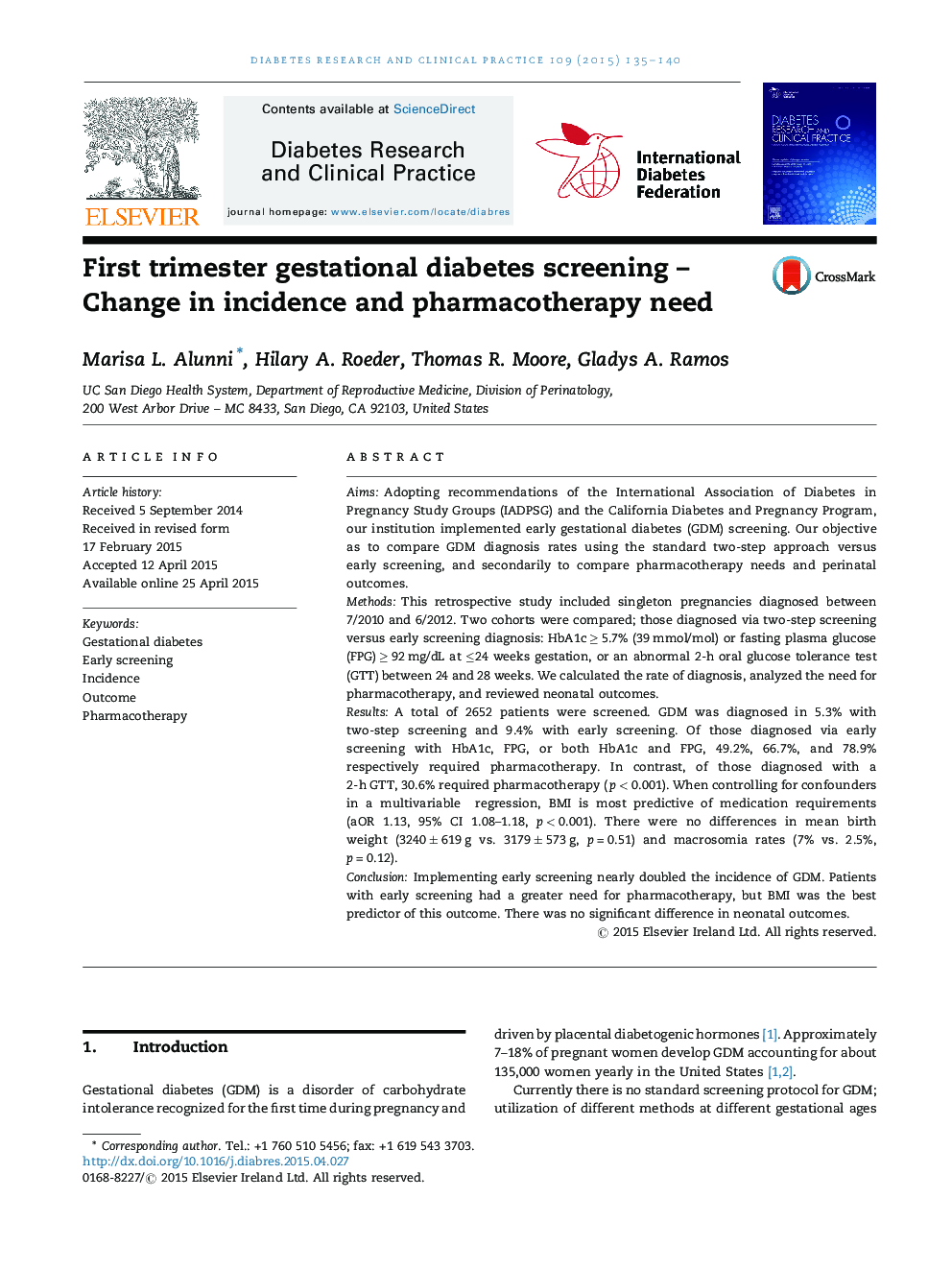| Article ID | Journal | Published Year | Pages | File Type |
|---|---|---|---|---|
| 5899133 | Diabetes Research and Clinical Practice | 2015 | 6 Pages |
â¢Implementation of early screening nearly doubled the incidence of GDM.â¢Patients diagnosed via early screening had more severe hyperglycemia.â¢BMI was the best predictor of medication need.â¢There was no significant difference in neonatal outcomes.
AimsAdopting recommendations of the International Association of Diabetes in Pregnancy Study Groups (IADPSG) and the California Diabetes and Pregnancy Program, our institution implemented early gestational diabetes (GDM) screening. Our objective was to compare GDM diagnosis rates using the standard two-step approach versus early screening, and secondarily to compare pharmacotherapy needs and perinatal outcomes.MethodsThis retrospective study included singleton pregnancies diagnosed between 7/2010 and 6/2012. Two cohorts were compared; those diagnosed via two-step screening versus early screening diagnosis: HbA1c â¥Â 5.7% (39 mmol/mol) or fasting plasma glucose (FPG) â¥Â 92 mg/dL at â¤24 weeks gestation, or an abnormal 2-h oral glucose tolerance test (GTT) between 24 and 28 weeks. We calculated the rate of diagnosis, analyzed the need for pharmacotherapy, and reviewed neonatal outcomes.ResultsA total of 2652 patients were screened. GDM was diagnosed in 5.3% with two-step screening and 9.4% with early screening. Of those diagnosed via early screening with HbA1c, FPG, or both HbA1c and FPG, 49.2%, 66.7%, and 78.9% respectively required pharmacotherapy. In contrast, of those diagnosed with a 2-h GTT, 30.6% required pharmacotherapy (p < 0.001). When controlling for confounders in a multivariable regression, BMI is most predictive of medication requirements (aOR 1.13, 95% CI 1.08-1.18, p < 0.001). There were no differences in mean birth weight (3240 ± 619 g vs. 3179 ± 573 g, p = 0.51) and macrosomia rates (7% vs. 2.5%, p = 0.12).ConclusionImplementing early screening nearly doubled the incidence of GDM. Patients with early screening had a greater need for pharmacotherapy, but BMI was the best predictor of this outcome. There was no significant difference in neonatal outcomes.
